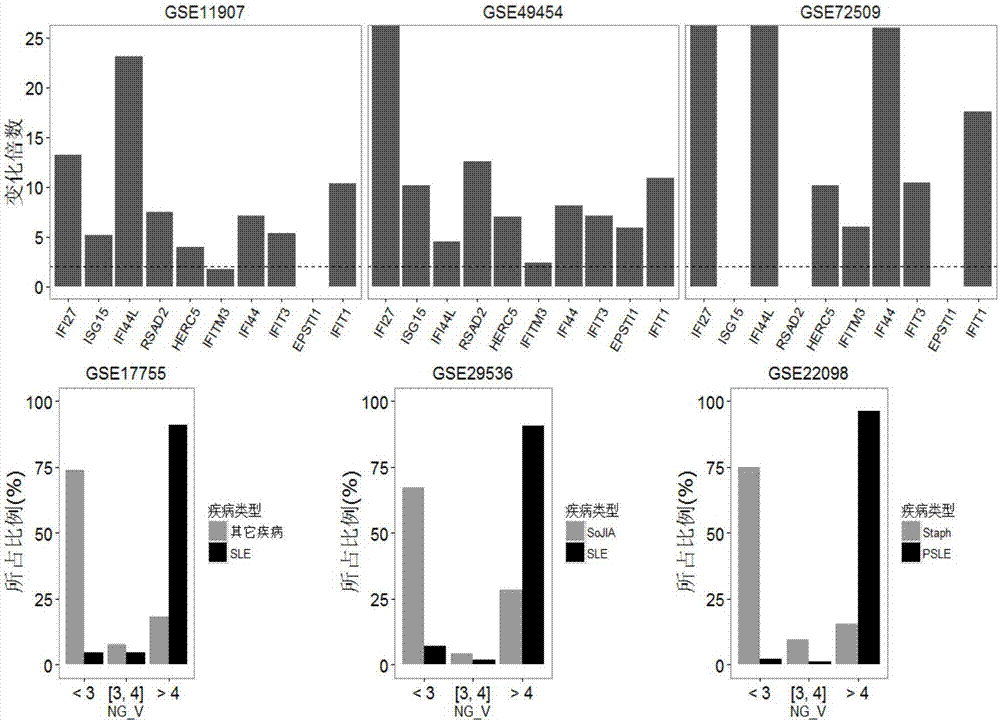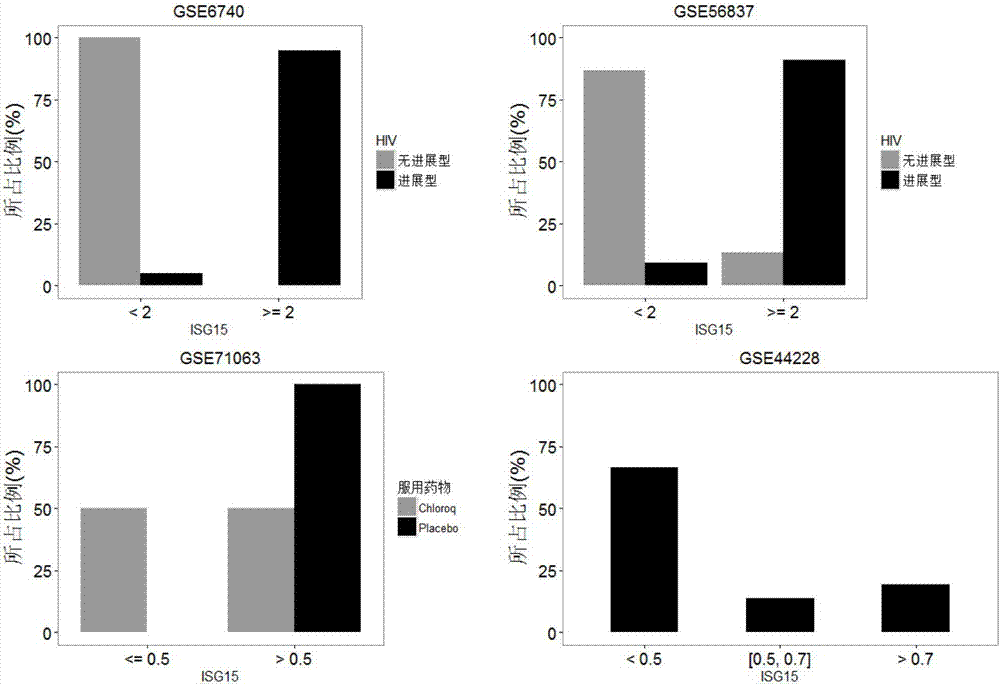Detection system for detecting human immune state
A detection system and technology for detecting human body, which can be used in the determination/inspection of microorganisms, biochemical equipment and methods, etc., and can solve problems such as overfitting
- Summary
- Abstract
- Description
- Claims
- Application Information
AI Technical Summary
Problems solved by technology
Method used
Image
Examples
Embodiment 1
[0045] Embodiment 1 Collection of public data
[0046] All data sets used in the present invention are public data sets, and all come from the Gene Expression Omnibus (GEO) of the National Center for Biotechnology Information (NCBI). The research mainly consists of two stages: selection of candidate genes and verification of test candidate genes. The data sets used are also divided into two batches:
[0047] 1. Data sets used to select candidate genes
[0048] The selection of candidate genes is used as the research basis of the present invention, and the selection of data sets must have strict screening criteria: (1) the data must pass through preprocessing filtering, that is, the data quality must pass the test, and reduce errors from the data source as much as possible; 2) On the premise of ensuring data quality, obtain as much data as possible on infection or autoimmune diseases; (3) The data must be whole blood data; (4) In order to ensure subsequent differential express...
Embodiment 2
[0067] The processing method of embodiment 2 data
[0068] 1. All chip data processing flows in the present invention
[0069] Due to the large amount of data, the present invention does not use the original chip data, but the expression value matrix data provided in various studies. These expression value matrices were preprocessed by each research group. However, due to different chip platforms, different research laboratories, different test environments, and different preprocessing methods of each laboratory, the obtained data cannot be used directly. But to go through strict screening and filtering. For the re-preprocessing and filtering of these data, there are several strict filtering criteria, as follows:
[0070] (1) All expression values need logarithmic (log) processing;
[0071] (2) The proportion of unqualified values (including missing, or unreasonable) of each probe in all samples shall not be higher than the set threshold (50% is used in this study), oth...
Embodiment 3
[0095] The selection of embodiment 3 candidate genes
[0096] For the differentially expressed genes initially obtained based on the 20 sets of data disclosed in Table 1 in Example 1, further screening is required to obtain candidate genes for research.
[0097] First, filter the differentially expressed genes in each group by FC, and select dysregulated genes with FC>2 or FC<0.5. It can be seen that the threshold used is almost harsh, because the candidate genes expected to be found have strong interference resistance. Then, the differentially expressed gene counts of the 20 sets of data were merged and ranked in reverse order of count size. Finally, based on the above rankings, combined with the observation of the consistency of gene expression in the two types of data sets (bacteria-related disease data and virus-related disease data), 10 genes of BRGs and 10 genes of VRGs were finally selected. As in Table 2.
[0098] Table 2 uses BRGs and VRGs to distinguish bacterial ...
PUM
 Login to View More
Login to View More Abstract
Description
Claims
Application Information
 Login to View More
Login to View More - R&D
- Intellectual Property
- Life Sciences
- Materials
- Tech Scout
- Unparalleled Data Quality
- Higher Quality Content
- 60% Fewer Hallucinations
Browse by: Latest US Patents, China's latest patents, Technical Efficacy Thesaurus, Application Domain, Technology Topic, Popular Technical Reports.
© 2025 PatSnap. All rights reserved.Legal|Privacy policy|Modern Slavery Act Transparency Statement|Sitemap|About US| Contact US: help@patsnap.com



